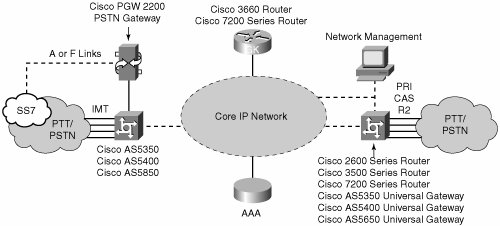Prepaid Calling Card
| Prepaid and postpaid calling-card services represent one of the fastest-growing types of enhanced voice services. A variety of consumer segments have propelled the growth of these services, including students, business and leisure travelers, and immigrants. They are especially popular among mobile telephone users as an alternative to the costly international rates of mobile operators. For carriers who want to realize more profit from a global long-distance network, prepaid and postpaid calling-card services represent an opportunity to improve margins, direct minutes to the network, and increase customer retention. For service providers that currently offer prepaid and postpaid calling-card services over a switched-circuit network, Cisco IP telephony networks provide a more cost-effective alternative for network expansions or upgrades. Packet voice technology offers a compelling alternative to the traditional TDM switched-circuit network. Packet telephony networks reduce the cost and time-to-market requirements associated with launching or expanding voice services, such as national and international transport, voice mail and unified communications, text-to-speech, speech recognition, and calling-card services. TDM-based services use a leased line and typically require a long-term financial commitment to that specific link. A TDM switch also represents a significant initial cash outlay and lengthy time period to achieve investment payback. The need to accelerate investment payback leads some providers to add fees for calling-card activation or connection, diminishing the service marketability in the process. Cisco offers a feature-rich product called Cisco Voice Infrastructure and Applications (VIA) for prepaid and postpaid calling-card services that is deployed via VoIP technology. Cisco VIA includes key features and attributes such as:
Cisco VIA offers the following benefits:
In Figure B-7, Cisco AS5xxx Access Servers allow calling-card customers into the network from the PSTN. The authentication, authorization, and accounting (AAA) server verifies the customer account status. When the account status is authorized, the gatekeeper directs the call across the IP core network to the remote router or gateway, and connects to the PSTN. The service provider receives revenue for routing the call across the IP core. Figure B-7. Prepaid Calling Card |
EAN: 2147483647
Pages: 111